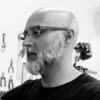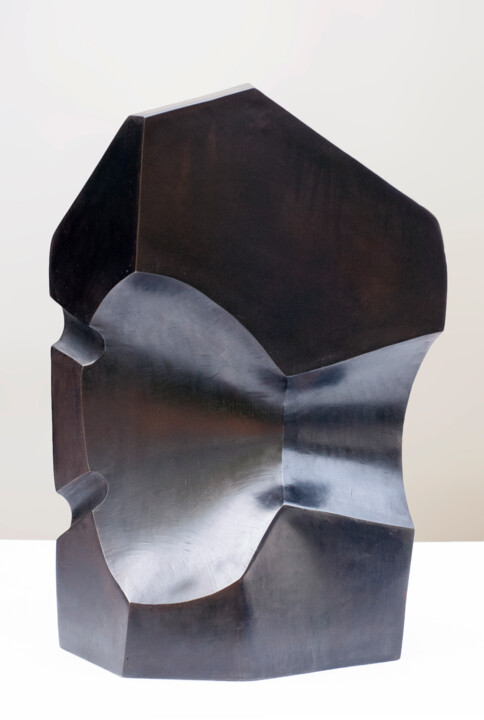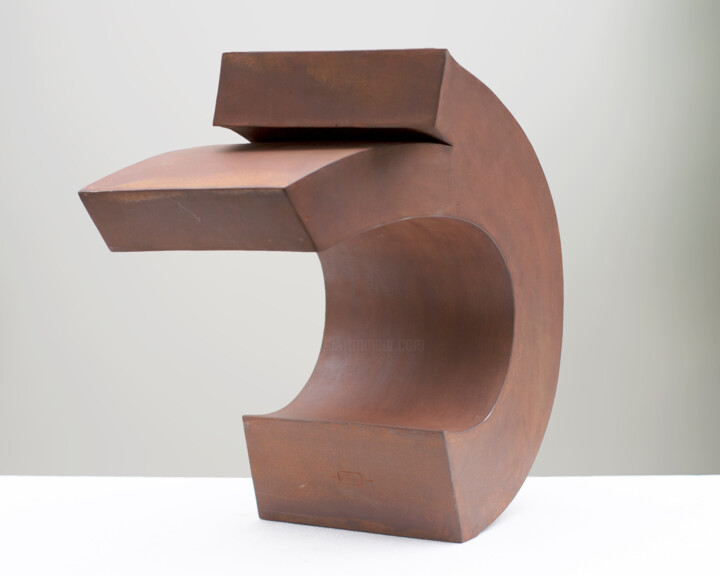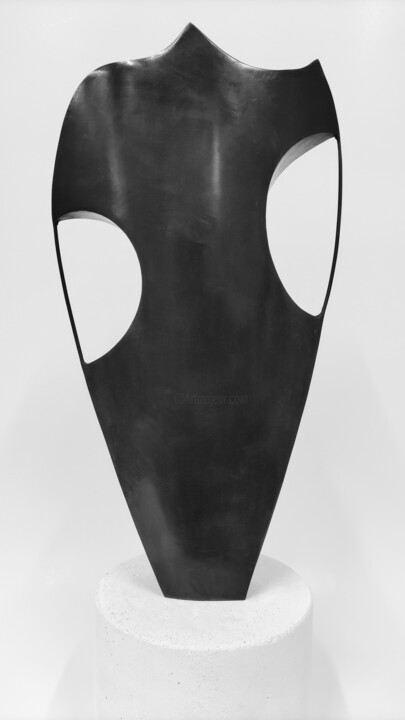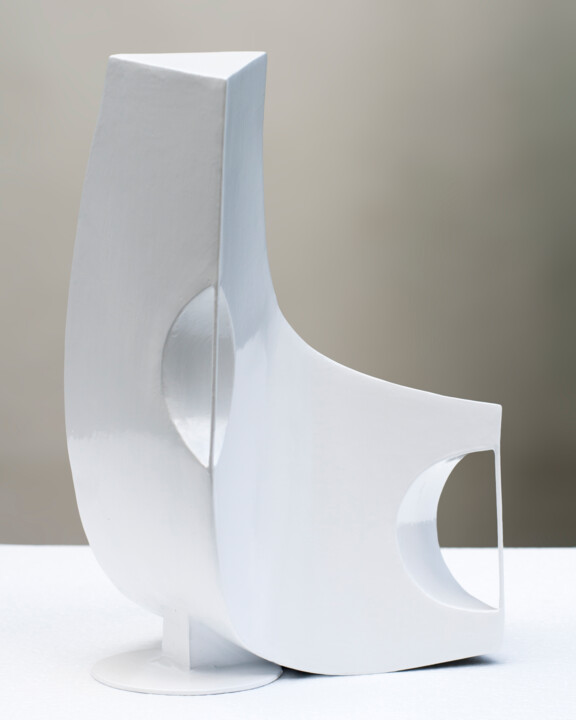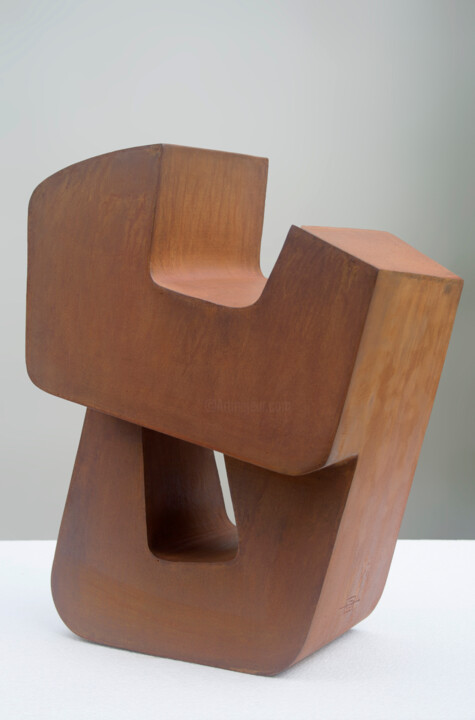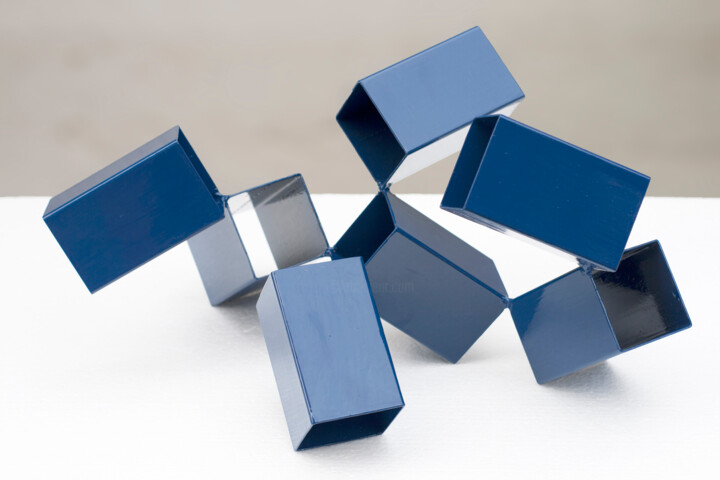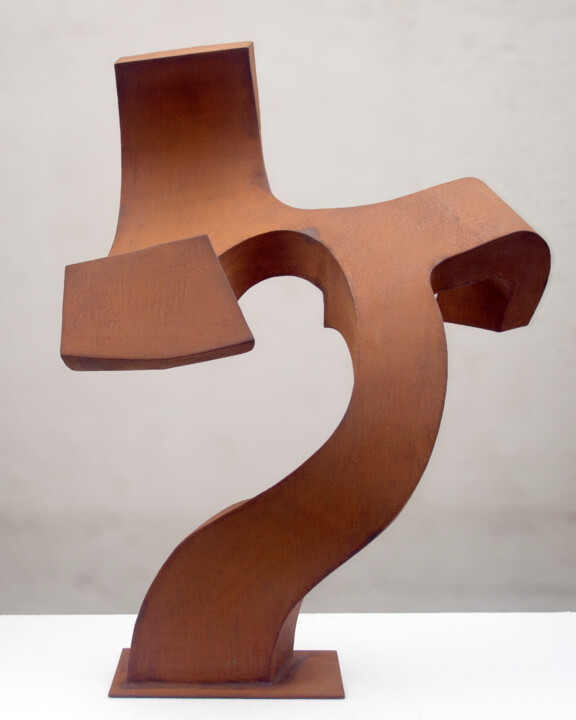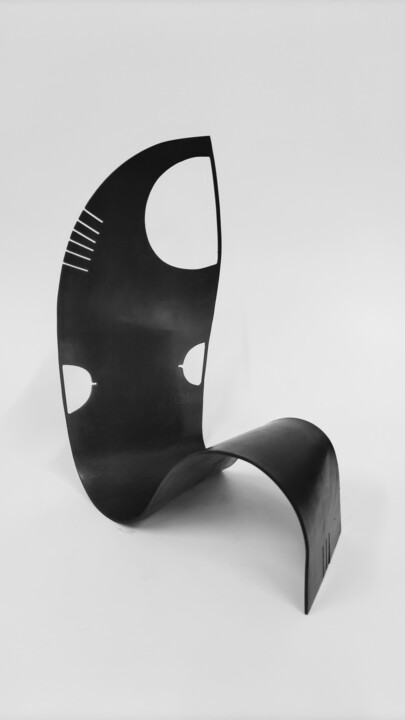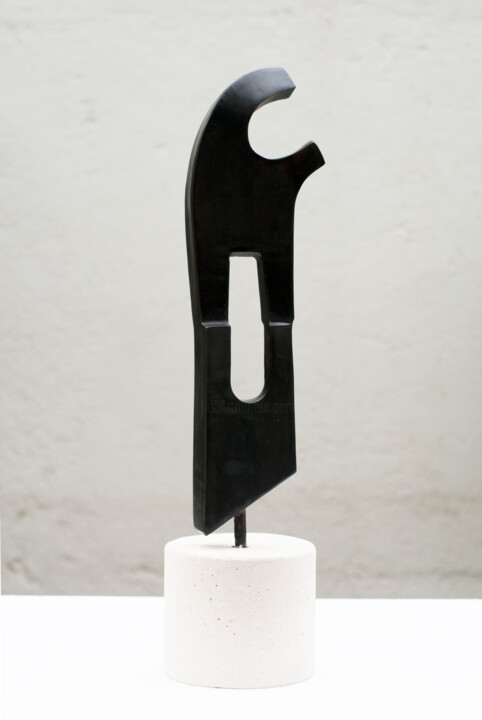What motivated you to create art and become an artist (events, feelings, experiences...)?
I have been fortunate to belong to a family interested in art and therefore my approach took place very naturally during my childhood. I don't see creating art as a voluntary choice, it is rather a vital necessity, a creative mechanism that allows me to externalize my unconscious part. From a very young age I dedicated many hours to building games, which together with family interests I believe have provided me with the basis that now allows me to develop my work. The beginnings were spontaneous through the design of jewelry that ended up deriving in the approach to sculpture.
As an element of revelation, which I could assume initiated my interest in sculptural work, I could point out the identification of a singular element in an interior decoration magazine, when I was twenty years old. That element, which at that time I did not know it was a sculpture, was placed as a bed headboard, it was an elongated and horizontal metal bar that in its central part had some loops. After a while I went into a bookstore and by chance they had a catalog of a Spanish sculptor, one of the most important of the second half of the twentieth century, Martin Chirino. I began to browse through the catalog and I was fascinated, in one part I found the series of pieces called Aerovoros, and here came the discovery, the piece that I had seen months before in the magazine and that had been recorded in my subconscious was one of the pieces of this series. I do not know very well why I left the bookstore without that book, but the image was still there, after a while I bought it. Fortunately, after a few years I was able to meet Martín Chirino personally at his home and visit his workshop.
I like to think that this accumulation of coincidences was the starting point of my sculptural pretension and that, in some way, the brain prepares the way for the discovery.
What is your artistic training, techniques and themes you have experimented with so far?
I attended for a couple of years to different modeling and sculpture workshops, but I could say that it is mostly unregulated. Because on this issue I think it is important to note that, at least in my case that I work with iron, there are two parts of creation that unite and separate that would be, purely creative part of the design, and the task of construction, which is a craft work. These two separate but dependent visions need a different and specific training.
The artistic training, which is the basis for consolidating the creative part, I have developed through seeing hundreds of exhibitions, I have attended dozens of conferences and I have taken university courses on contemporary art and avant-garde. On the artisan training I have been learning as I needed to solve technical problems and I have been incorporating solutions that facilitate and improve the final results.
What are the 3 aspects that differentiate you from other artists and make your work unique?
1.- Creation of elements with soul: My artistic and sculptural pretension is focused on the creation of elements with soul, although it may seem somewhat pretentious, so I try to stay away from abstraction, since I want to give the pieces an organic component. They must be elements that seem self-generated, with an original component and a clear change of vision but that, somehow, maintain a recognizable part that allows the viewer to enter the work. A reference for me of this concept would be: Brancusi, Isamu Noguchi, Henry Moore, Barabara Hepworth, Julio Gonzalez, Oteiza....
2.- Distancing from pure abstraction: I do not trust in the artistic game of randomness and pure abstraction and I firmly believe that it is not possible for it to really happen, given that two factors intervene that prevent it. On the one hand the creator, who even if he intends to do something purely abstract will have difficulties, because his brain will be forced to see patterns, forms, identifiable concepts, even in the stain or in the most abstract form. The same thing happens to the viewer who, when approaching the work consciously or unconsciously, will tend to see something recognizable. Therefore, I am not interested in this way, extracting from it some elements and discarding the rest.
3.- Return of the sacred character: Sculpture in antiquity always had a sacred component. Initially it was intended for portable elements of worship during prehistoric times, then we moved on to gods in their temples or mythological sculptures in ancient Greece and Rome, but always as an element of worship and reflection of a higher truth, always placed on a pedestal, so that they are separated from the viewer and placed in another dimension. At the end of the twentieth century it was decided to democratize art and remove the sculptures from the pedestal, assuming that this would bring the work closer to the viewer. The problem is that this elimination also places the work in the same dimension as the spectator and therefore robs the piece of its mysterious and sacred character.
We can remember that Brancusi made the pedestals especially for each work, almost like another complementary sculpture.
At this point I must also highlight African art, or what came to European museums in the early twentieth century. I extend this interest to all so-called "primitive" art, which proves time and again to be current because it appeals to the deepest recesses of our subconscious.
Where does your inspiration come from?
Inspiration comes from my interest in everything that surrounds me, be it painting, sculpture, music or any other branch of knowledge. It comes from researching and working on sculptural creation.
What is your artistic approach? What visions, sensations or feelings do you want to evoke in the viewer?
I would like the viewer to have the intuition that sculpture somehow has its own presence, a particular essence that transcends the inanimate object. I am interested in the idea that all things have a soul.
What is the creative process of your works: spontaneous or with a long process of preparation (technique, inspiration in the classics of art or others)?
My creative process takes two opposite lines depending on the preconditions. If it is a commission that must meet certain conditions I work with those premises trying to bring them to my language. On the other hand, if the creation is free and not subject to anything, I usually use an almost automatic drawing system. I start with some basic lines until I find a shape that interests me, then I focus on it and start making variations. The result is tens of thousands of sketches from which I transfer to sculpture those that at a given moment catch my attention or that I am able to visualize three-dimensionally.
Do you use any particular working technique? If so, can you explain it?
My work is centered, almost entirely, on cut, bent and welded sheet iron. Therefore I need a careful templating of the different parts so that the final result is as close as possible to the previous sketch.
Are there any innovative aspects in your work, and can you tell us what they are?
The only innovation I could bring would be a particular look, an approach to the organic abstraction of my pieces and, on the other hand, a work with modular forms. The challenge of achieving that organic sensation starting from equal and geometric pieces generates a lot of interest for me.
Do you have any format or medium with which you feel more comfortable?
As I have already mentioned, my work is centered on sheet iron, although it is true that in some way it limits me, since I cannot achieve the smoothness of forms that can be achieved with plaster for example, it gives me a nobility in the handling and a finish that I think compensates for it.
Where do you produce your work, at home, in a shared studio or in your own studio? And in this space, how do you organize your creative work?
I have the privilege of having my own studio at home, in an outbuilding.
How do you think your work and career as an artist will develop in the future?
If I analyze my work I think that, although it seems heterogeneous, it has a solid common thread that I hope to continue to evolve in the coming years. I am constantly striving to improve my facet as a craftsman, trying to develop pieces that I would not have tackled years ago due to their technical complexity.
What is the theme, style or technique of your latest artistic production?
For a season I have been making simplified human heads, almost cubist. The last piece I have developed, putting the heads aside, has been a work from the Obosom series. I've been working for 10 years on this series of sculptures that are inspired by female figures with a religious background, like a mixture of Christian Romanesque virgins and African ritual sculpture, all sifted through clean, stylized lines.
Can you tell us about your most important exhibition experience?
I have had more than 60 exhibitions in different European countries, both solo and group exhibitions, all of which have had something special about them.
If you could create a famous work of art history, which one would you choose? And why?
I would not dare to think of creating that sculpture, let's leave it that work seems to me the most unattainable, it would certainly be Michelangelo's David, as Coleridge would say it is not beautiful, it is sublime.
If you could invite a famous artist (dead or alive) to dinner, who would it be? How would you suggest to spend the evening with them?
I am not a mythomaniac of creators, I believe that the work is above the artist and therefore, a priori, I would not be too interested in an evening with them... but with their work. An incredible night could be to enjoy the works of Brancusi or Julio Gonzalez, to give two examples, in solitude... and to be able to touch them, of course. The tactile part is very important to appreciate the sculpture and the museums steal it from us, so I think the only real way to enjoy art is to share your life with it, to have it in your home, to see it every day, to appreciate every day a small detail, to see how it changes with the light of each season, as if it were alive.

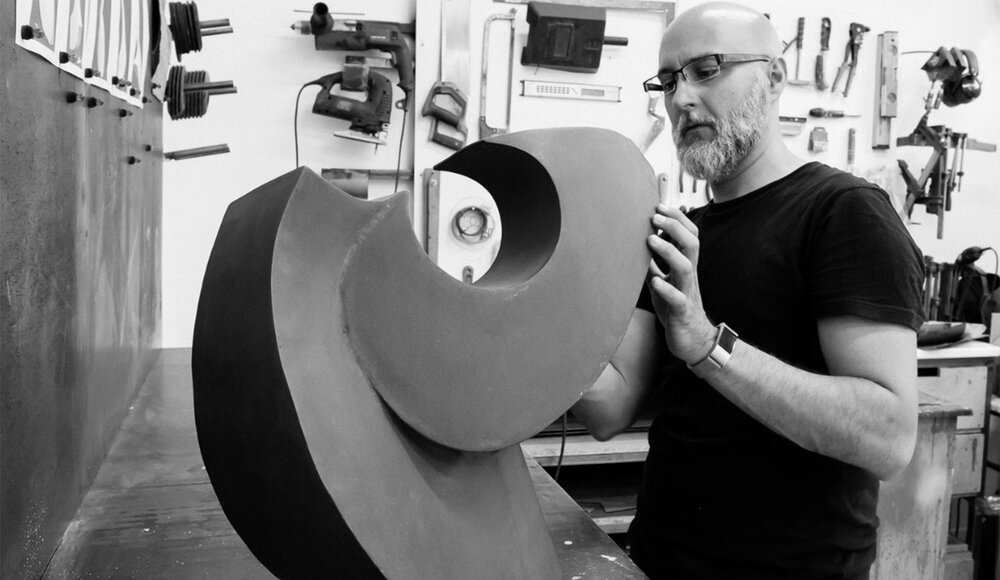

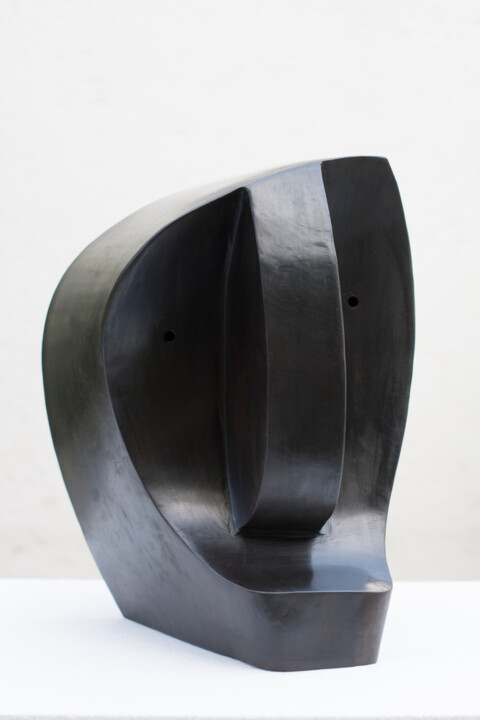



 Olimpia Gaia Martinelli
Olimpia Gaia Martinelli
